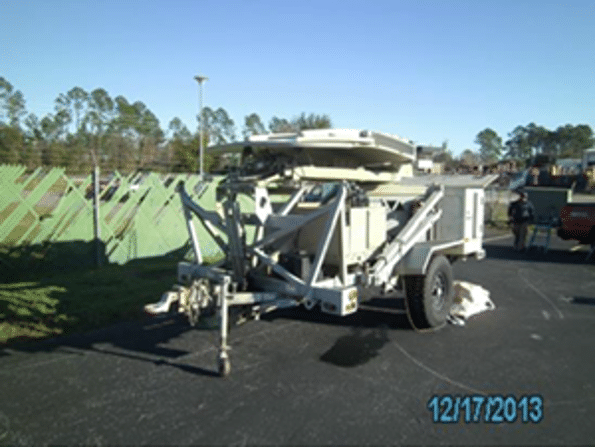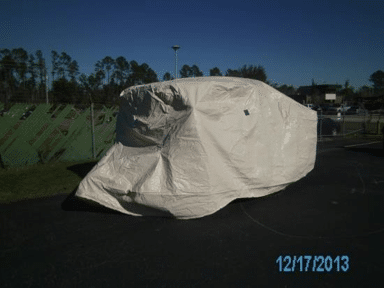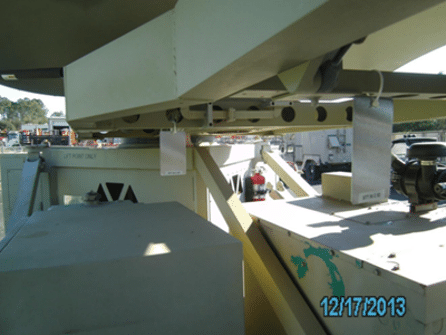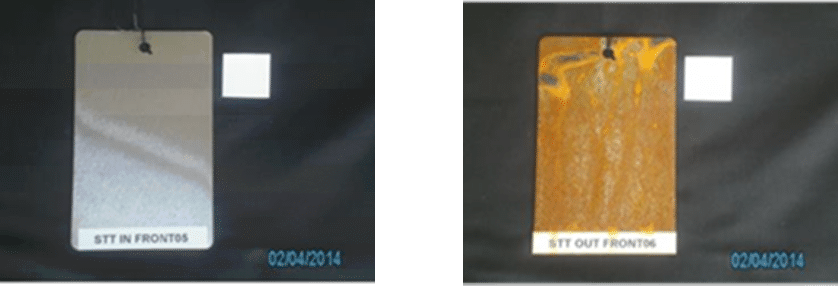In 2013, at the request of the Florida National Guard, a Satellite Transportable Terminal (STT) was protected by a Transhield XT advanced protective cover with Vapor Corrosion Inhibitor (VCI) at a Florida National Guard base in Jacksonville, FL. Paired coupons were employed inside and outside the cover to assess the level of protection provided to the asset. Some stand-alone coupons were also employed.
At the conclusion of the 45-day evaluation, National Guard personnel witnessed the removal of the Transhield XT advanced protective cover. Photographs of the coupons were taken immediately. Protection provided by the cover is quantified by calculating the area of the coupon not corroded and expressing that as a percent of the total coupon area. Photographs of the STT, with and without the Transhield cover, and an example of coupon placement are shown below.



Typical paired coupon post trial results highlight the dramatic corrosion prevention and are shown below.
 In this test, the Transhield XT advanced protective cover provided in excess of 99% protection for all coupons. A logical conclusion is that similar protection is provided to unpainted metals of the STT.
In this test, the Transhield XT advanced protective cover provided in excess of 99% protection for all coupons. A logical conclusion is that similar protection is provided to unpainted metals of the STT.
This means that equipment protected by a Transhield XT advanced protective cover with VCI technology require less maintenance and fewer repair parts. The return on investment (ROI) is significant when the cover cost is considered. Life cycle costs are also driven down. Specific examples are available upon request.
Independent Approval: In 2013, NAVSEA approved the next generation of advanced protective cover with VCI technology developed by Transhield.
Made from ArmorDillo® with VCI technology, these second-generation covers provided a lighter, more formfitted cover. Growing demand for covers to protect an array of different assets throughout the fleet confirms the cover’s efficacy. Should the cover be damaged, repair kits are available with accompanying procedures that enable guardsmen to repair cuts, tears and other mechanical damage.
Bottom Line: Three fundamental components are required to protect assets:
1. Covers must be made from VCI enhanced fabric.
2. Cover design matters; covers must be formfitting.
3. Covers need to be installed correctly and secured property to protect equipment.
References [1] Sharman, D. J., Milot, M., Ozol, S., The Wide-Ranging Benefits of Corrosion Inhibitors, American Society of Naval Engineers, MegaRust 2016: Naval Corrosion, June 2016